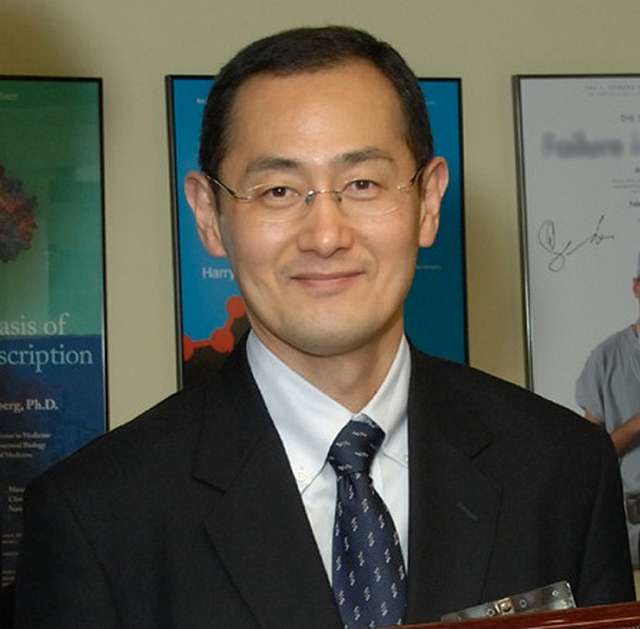Paralyzed Man Stands Again in Breakthrough Stem Cell Therapy Study
Cellular reprogramming, a technique currently being investigated as an age-reversal therapy, helps a paralyzed man walk again by regenerating his spinal cord neurons.
Highlights
- One paralyzed man can stand again while another can move his limbs after treatment with neural stem cells.
- Scientists used a technique called reprogramming, a variation of which is currently being tested as an age-reversal therapy.
- Fall-induced spinal cord injuries in older age can potentially be prevented by maintaining muscle strength and balance.
In 2019, Japanese scientists were granted permission to inject reprogrammed stem cells into spinal cord injury patients, according to Nature. The scientists, led by Hideyuki Okano, MD, PhD, were the first to show that transplanted neural stem cells can generate new neurons in the spinal cord of rats and marmosets, a non-human primate species that model humans better than rodents.

However, the stem cells used by Dr. Okano and his colleagues were derived from fetuses. Due to ethical issues with testing fetal stem cells on humans, the researchers turned to reprogrammed stem cells, which do not require a fetus. In 2012, this time with the reprogrammed stem cells, the tenacious scientists regenerated the spinal cord of marmosets once again, confirming the applicability of regenerating the neurons of the spinal cord with stem cells.
Nine years later, after being granted permission, Dr. Okano and his colleagues began testing the reprogrammed stem cells on humans. In 2021, the researchers performed their first surgery, performing three more between 2022 and 2023, reports Nature. The four spinal cord injury patients were adult males, two of whom were older individuals above the age of 60. All participants had the most severe form of spinal cord injury, where motor and sensory functions were completely lost.
The stem cell injection surgeries took place a few weeks after injury, and the four men were given immune-suppressing drugs for six months to prevent immune system rejection. After the stem cell treatment, one of the participants, who was paralyzed, was able to stand again. He is now learning to walk again. Another participant was able to move his arms and legs again. However, the remaining two participants did not show significant improvements. Still, the study was not designed to show how effective the stem therapy was but to show that it was safe, which it was. No serious adverse effects were observed during the one-year follow-up.
“That’s a great positive outcome. It’s very exciting for the field,” says Australian neuroscientist James St John. “Nothing’s really worked so far.”
St John also mentions that the two participants who saw improvements may have recovered naturally. Larger studies with more participants and a control group will be needed to confirm that the reprogrammed stem cell therapy actually reverses spinal cord injury in humans.
What are Reprogrammed Stem Cells?
Reprogrammed stem cells are better known as induced pluripotent stem cells (iPSCs). “Pluripotent” describes the ability of stem cells to give rise to multiple cell types, including neurons. Naturally occurring pluripotent stem cells exist as embryonic stem cells but come with ethical issues. To avoid the ethical issues surrounding the use of embryonic stem cells, scientists began experimenting with the idea that pluripotent stem cells could be induced from mature cells. Eventually, their endeavors proved fruitful, and now iPSCs are widely used by scientists.
The process of inducing pluripotent stem cells from mature cells, such as skin cells, is called cellular reprogramming. The process involves four transcription factors that are highly expressed in embryonic stem cells now collectively called Yamanaka factors. They are named after Shinya Yamanaka, MD, PhD, who won the Nobel Prize for successfully generating iPSCs. Expressing Yamanaka factors in mature cells reverses the developmental trajectory of the mature cells, reverting them to an earlier stage of development (i.e., embryonic-like pluripotent stem cells).

Partial Cellular Reprogramming and Age-Reversal Therapy
Scientists have found that mature cells can be partially reprogrammed so their developmental trajectory is reversed but they are not reverted back to stem cells. Essentially, partial cellular reprogramming makes cells younger. While partial cellular reprogramming has been used to prolong the lifespan of mice, it has a long way to go before being tested in humans. For partial cellular reprogramming to work, Yamanaka factors must be delivered into the body using gene therapy. Scientists still need to work out the side effects involved in both partial cellular reprogramming (e.g., tumor growth) and gene therapy (e.g., off-target effects).
Protecting Against Spinal Cord Injury in Older Age
At least one-third of people over the age of 65 fall each year, and the most common cause of spinal cord injuries after the age of 65 is falls, according to the Mayo Clinic. Therefore, reducing the risk of falls could potentially reduce the risk of spinal cord injury in older age. Falls can occur due to a lack of balance and muscle strength, which decline with age. Thus, maintaining youthful balance and strength into old age could prevent serious injuries.
A meta-analysis of 108 randomized controlled trials and over 23,000 people showed that exercise reduces the risk of falls by 23%. Another meta-analysis showed that integrating resistance training, core training, and balance training has a significant impact on reducing fall risk. This means that exercising for strength and balance maintenance can potentially reduce the risk of spinal cord injury. If not over the age of 65, it may still be beneficial to build muscle mass and strength and maintain balance, as it becomes harder to do so with age.

